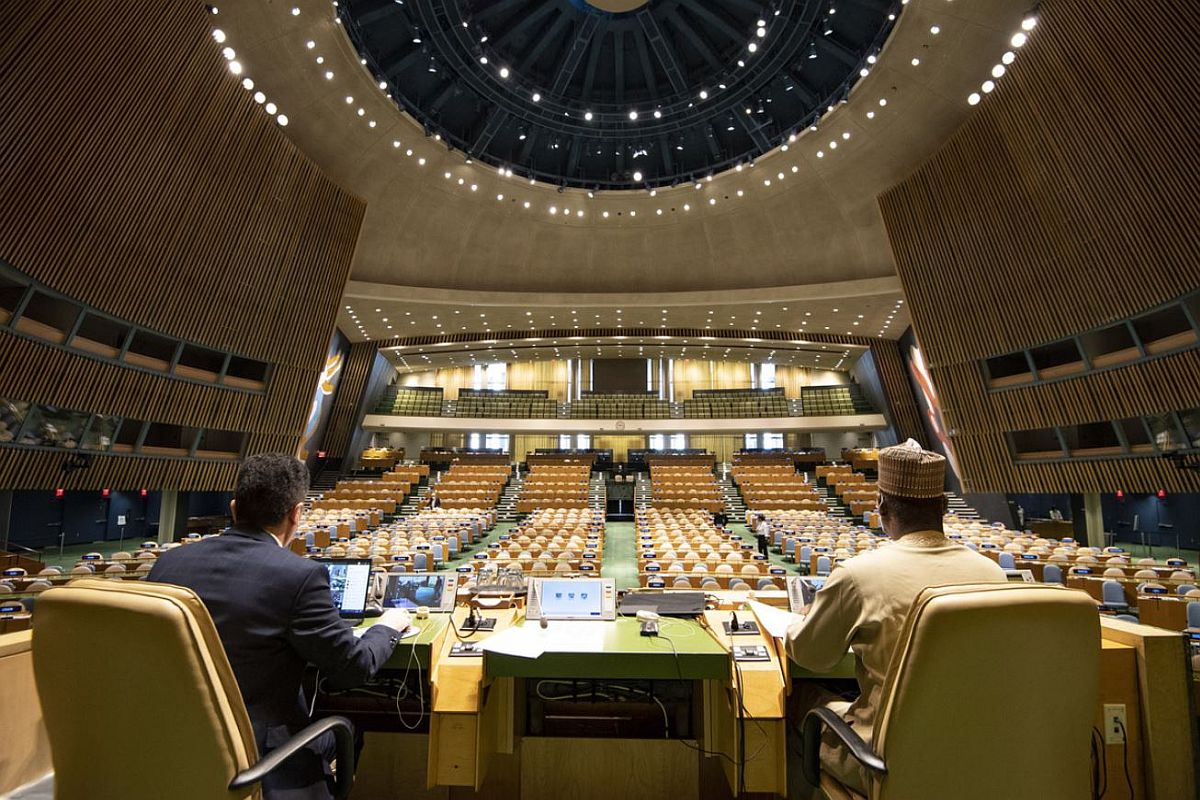Congress committing dacoity on rights of OBCs, SCs, STs: PM
“Wherever it (Congress) can do it, it will try to loot the claims of the SCs, STs and OBCs and give them to others,” said Modi.
While the main target of Beijing’s ire is obviously the USA, India is being seen increasingly as a significant irritant.

The United Nations Security Council (Photo: Twitter | @UN)
Nothing is what is seems in geopolitics and seemingly innocuous, unconnected events sometimes have a deeper meaning. Call it a concatenation of circumstances or read into them strategic significance in terms of positioning, but a series of developments this week have set tongues wagging at the diplomatic high table.
Prime Minister Narendra Modi will chair an open debate on maritime security at the United Nations Security Council on 9 August. The government and media have been focussing on the first-ever narrative, as it were. While it will indeed be the first time that an Indian Prime Minister will preside over such an interaction at the global forum, that may safely be put down to happenstance given India took over the rotating presidency of the 15-nation UN Security Council for the month on 1 August and such events are planned much in advance.
Of import is the substance of New Delhi’s planned outreach ~ engaging with the world community on maritime security, peacekeeping, and counter-terrorism. India has been active in helping friendly countries in pursuit of its Act East policy and enhancing military cooperation with them. The Indian Navy undertakes regular missions in the Indo-Pacific region in furtherance of the Security and Growth for All in the Region or SAGAR initiative.
Advertisement
As if on cue, a task force of the Eastern Fleet is setting sail for a two-month deployment in the South China Sea, the Western Pacific, and Southeast Asia to underscore its operational reach and “strengthen existing bonds between India and countries of the Indo-Pacific”. Shorn of diplomatese, what all of this means is that South Block is trying, with the tools available to it, to put the squeeze on China.
Beijing is, of course, entirely cognisant of this development. In a statement timed to exhibit this fact, Foreign Minister Wang Yi called earlier this week at a China-Asean interaction for steps to “tackle external interference” and speed up the consultation process to give effect to the Code of Conduct for the South China Sea to safeguard stability in the region. The message was clear: Fall in with Beijingenforced “peace” in the region or else.
Disputes, Mr Wang iterated, must be resolved between the countries directly involved, and claimed that the freedom of navigation and overflight is protected in accordance with international law in the South China Sea. The giveaway, was the Chinese Foreign Minister calling on his Asean colleagues “to stay vigilant to actions by certain countries outside the region that (seek) to openly intervene in territorial and maritime disputes in the region, sow discord between China and Asean members, and send a large number of vessels to the region.”
The Chinese narrative of not allowing outsiders and/or interlopers ~ who have become the “biggest troublemakers”, in Mr Wang’s words ~ to make the South China Sea and the larger region an arena for intervention has many takers in Southeast Asia; nearly all Asean nations’ prosperity is now linked inextricably with Asia’s largest economy. While the main target of Beijing’s ire is obviously the USA, India is being seen increasingly as a significant irritant. New Delhi should take that as a compliment.
Advertisement